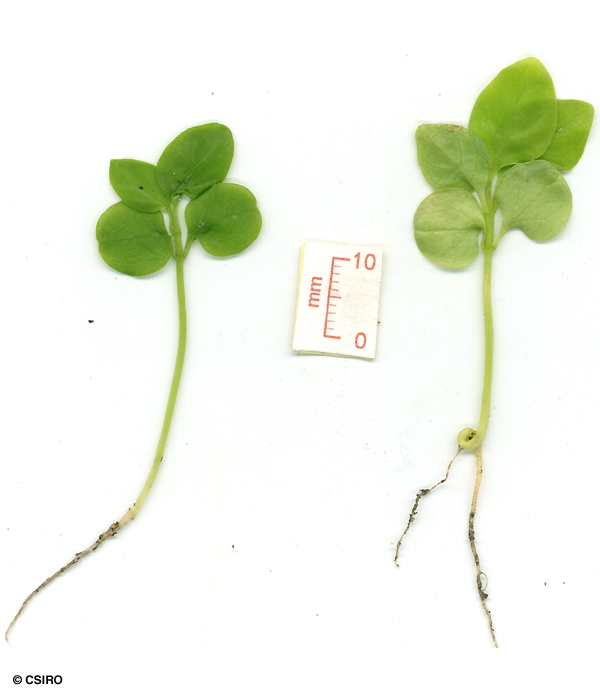Australian Tropical Rainforest Plants - Online edition
Cestrum nocturnum L.




Linnaeus, C. von (1753) Species Plantarum 1: 191. Type: Jamaica, Chili; holo: BM. Fide W. G. DArcy, Ann. Missouri Bot. Gard. 60: 607 (1973).
Bastard Jasmine; Night Jessamine; Lady of the Night
Usually flowers and fruits as a shrub or scandent shrub about 2-3 m tall.
Leaf blades about 6-13.5 x 2-4.5 cm, petioles about 0.4-0.8 cm long. Lateral veins curving inside the blade margin but not forming definite loops.
Flowers about 18-20 mm long, each subtended by a bract about 3 mm long. Calyx tube about 2-2.5 mm long, lobes about 0.75-1 mm long. Corolla tube about 15 mm long, lobes about 4 mm long. Anther filaments about 2-2.5 mm long, anthers globular, about 0.5-0.75 mm long. Style + stigma about 19-20 mm long.
Cotyledons about 9-17 x 8-12 mm appearing almost orbicular. Apex emarginate with a gland in the sinus. Petioles about 3-4 mm long, clothed in papillose hairs. Hypocotyl papillose. First leaves ovate-elliptic, glabrous, base obtuse. At the tenth leaf stage: leaf blade elliptic, lateral veins 6 or 7 on each side on the midrib. Terminal buds and stems sparsely clothed in hairs which are only visible with a lens. Seed germination time 20 days.
An introduced species originally from Central America and the Caribbean, now naturalised in NEQ and also in south eastern Queensland and coastal central New South Wales. Altitudinal range in NEQ mainly in 750-1000 m range.
Leaves and flowers poisonous. Austin, D. F. 1998. Poisonous Plants of Southern Florida.
This species may have medicinal properties. It is also poisonous to a range of animals including people and rabbits.
Widely cultivated in tropical areas for the strongly scented flowers. Purdie et al (1982).





